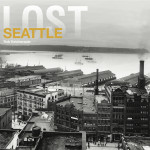Profile of "Look", the shopping street running north from Shin-Koenji Station.
This is the first entry in the special feature Merchants of Koenji, introducing the shopping districts (商店街, shoutengai) of Tokyo's Koenji (高円寺, Kouenji) neighborhood.
Just outside the exit of Tokyo Metro's Shin-Koenji Station (新高円寺駅, Shin Kouenji Eki) is the beginning of Koenji Look (高円寺ルック, Kouenji Rukku) shopping district. It runs straight north for 600 meters, then switches to Pal shopping district the rest of the way to JR Koenji Station.
There are two hundred shops lining the foot and bicycle-only street. Even ignoring the fact that there are intersections and other short blank spots, that's one business every six meters on each side. Recently I read that my old haunts on Capitol Hill in Seattle will soon be demolished for new development, which will replace 6 store fronts with 3. It piqued my interest, because that stretch of Pine Street is filled with vintage clothing shops and cafes, and begs to be compared to Koenji Look. I spent a half day researching the businesses that line a comparable 590 meter segment, from Minor to Broadway. The result? One of the most business-rich, interesting, walkable spots in Seattle has only 49 businesses facing Pine, less than a quarter of Koenji Look. I would love to rant about the differences in scale of development and business cooperation, but I'll save that for another time.
The official association name is Shin-Koenji Street Shopping District (新高円寺通商店街, Shin Kouenji Doori Shoutengai). Beyond choosing a more marketable name, the Look logo was put on street ends, and unique pedestrian-level lighting is repeated along the street with the logo repeated on banners. Look merchants were initiators of the Koenji Awa dance festival (阿波踊り, Awa Odori) in 1955, and they sponsor other events and coordinated sales to attract customers throughout the year.
Even on New Years eve, the street is full of shoppers. Most youthful Tokyo neighborhoods empty out at New Years, when people return alone or with their families to their parents' home. It shows how many consider the area to be their real home (実家, jikka), and how dedicated the shop owners are to stay open. Up on the left is a stand run by neighborhood boys, selling New Years ornaments and charms.
A grandfather and his granddaughter, presumably visiting for New Years', carry groceries on a residential road just off of Look. Look is bracketed by narrow streets lined with small apartment buildings and single-family homes, creating a dependable customer base.
Although this vintage clothing shop is having a clearance sale, the road is lined with many more. Koenji's vintage boom started here, and it's still at the center.
As old stores go, new stores come. This new shop sells fish-shaped waffles filled with sweet beans - tai yaki (タイ焼き). It's a fairly common street vendor treat. In fact, there used to be a vendor across the street, in front of the grocer, but the foot traffic apparently warranted a more permanent business.
Here is Animal Yoko, a confusing shop selling a seemingly random assortment of used clothing, books, comics, toys, and other stuff. It all fits together, though, and basically if your taste matches the owner's, you'll find something good on every visit.
American kitsch and silly used toy stores have come to compliment the vintage clothing.
Seven Forest (七つ森, Nanatsumori) is the most famous cafe on Koenji Look, a favorite hang out of neighborhood musicians since the 70s. Cafe Noble caught my eye, though, with its garish paint job and street-side caramel corn vending. The barrista pops outside between customers to try and hawk some corn on passersby.
At the north end, Look meets with Pal at the now-capped Peach Orchard Creek Green Space (桃園川緑地, Momozono-gawa Ryokuchi), and another gate tops the street.
